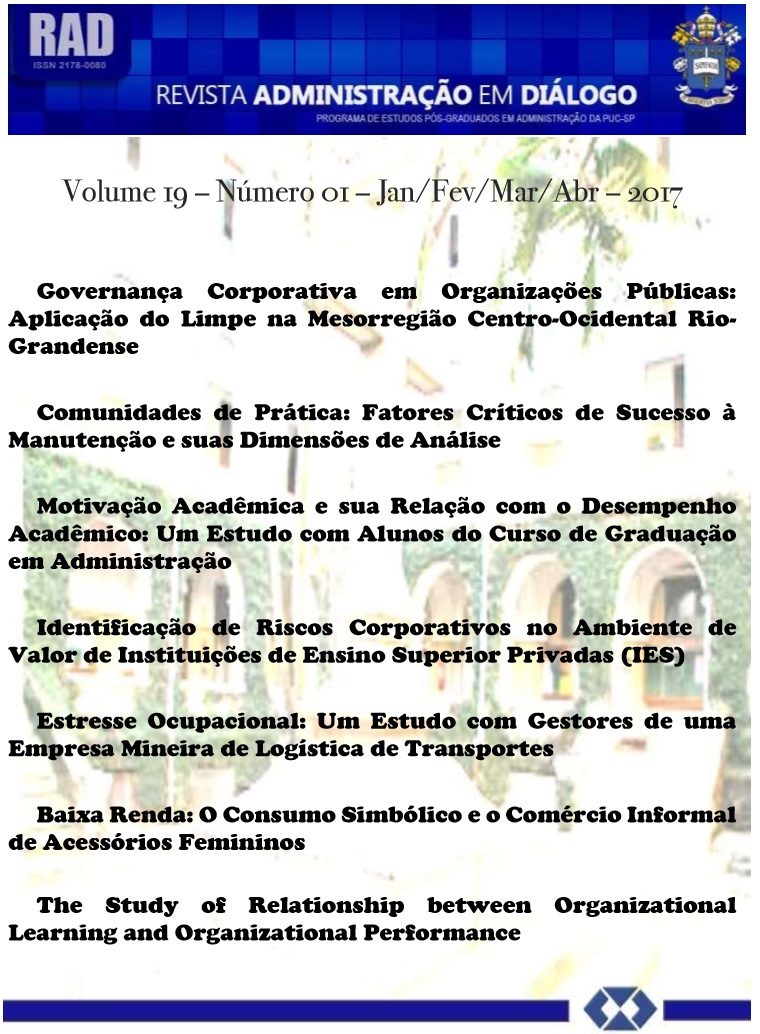Identificação de Riscos Corporativos no Ambiente de Valor de Instituições de Ensino Superior Privadas (IES)
DOI:
https://doi.org/10.20946/rad.v19i1.23444Palabras clave:
Gestão de Riscos Corporativos, Instituição de Ensino Superior, Ambiente de Valor.Resumen
O presente artigo tem como principal objetivo compreender quais riscos corporativos podem ser identificados no ambiente de valor de instituições de ensino superior privadas (IES). O estudo classifica-se como descritivo e qualitativo, tendo como base a análise de entrevistas com gestores de duas diferentes instituições de ensino superior privadas. Os resultados demonstram que a nomenclatura e tipologia de riscos corporativos ainda é pouco clara aos profissionais responsáveis pela gestão das IES privadas. Além disso, percebeu-se que o risco mais evidenciado foi o risco legal, decorrente da relação com o Ministério da Educação; seguido pelo risco financeiro, ocasionado pela evasão e falta de alunos.
Descargas
Publicado
Cómo citar
Número
Sección
Licencia

Este obra está licenciado com uma Licença Creative Commons Atribuição 4.0 Internacional.







